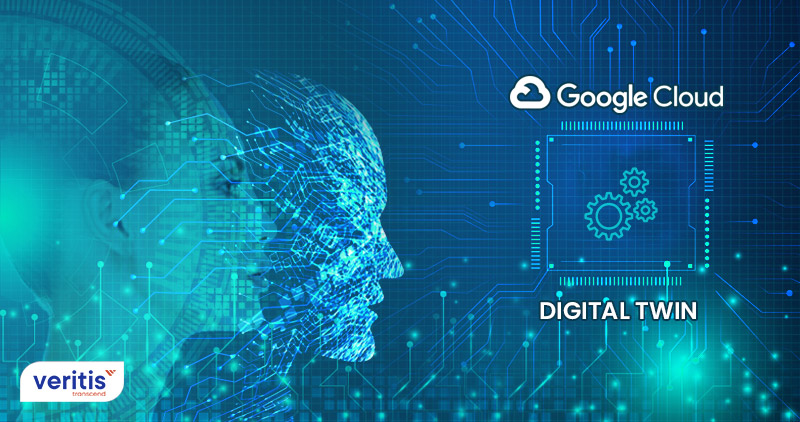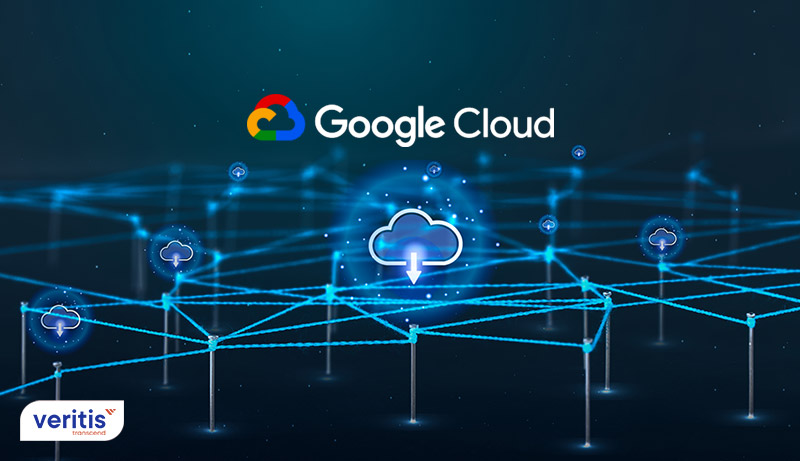
The recent supply chain woes have sent jitters across the globe. From Apple to Sony, consumer products of various types have been adversely impacted by the shortages. What started from toilet paper rolls has emerged into a chip shortage crisis, leaving many in the lurch.
Although the precise triggers and causes are nebulous, the result is chipping away the profits and leaving the consumers with bitter aftertastes. To stop this, Google Cloud has come up with ‘Digital Twin,’ an AI-driven tool that aims to reinvent the supply chain operations with data-powered insights.
Google released Digital Twin in September 2021, and its mission to thwart supply chain crises was largely successful as the American holiday sales ramped up by 8.5% compared to 2020 sales data. This healthy gain displays the trend that supply chains, like the rest of the world, are undergoing a tectonic shift, thanks to the pandemic.
Also Read: Cloud Computing: Trends, Challenges and Benefits
This shift signals that businesses will have to rejig their supply chain implementations. This challenge will be a lost opportunity should the companies not take cognizance of the potential. Recognizing the changing trend, Google Cloud has upgraded its Supply Chain Twin offering, which is all about providing actionable visibility to every significant actor in the supply chain.
“It’s a digital representation of the physical supply chain,” said Hans Thalbauer, the managing director for supply chain for Google Cloud.
“You model all the different locations of your enterprise. Then you model all your suppliers, not just tier one but tier two, three, and four. You bring in the logistic service providers. You bring in manufacturing partners. You bring in customers and consumers so that you have really the full view.”
The users of Digital Twin can reap the tool’s benefits by uploading the data from past orders, including pricing, costs, and supply and demand forecasts. This data upload will provide vital statistics to the users, and they can decide how they would want to use it.
“Then you also want to get information from your business partners,” Thalbauer told Datanami last year. “You share your demands with your suppliers. And they actually loop back to you what is the supply situation. You share the information with the logistics service providers. You share sustainability information with the service provider,” said Thalbauer.
The managing director also stated that Digital Twin’s integration capabilities are far better when compared to the general standards as the tool has fused with APIs and Electronic Data Interchange (EDI) data quite reliably. The latter is a data exchange format developed due to Walmart’s efforts to better the supply and demand chain. Due to massive chain disruptions, Thalbauer opined that EDI alone could not shoulder the weight.
Also Read: 6 Cloud Trends Which Shall Dominate 2022
“Think about the automotive industry, where it’s very obvious,” Thalbauer said. “Automotive OEMs [original equipment manufacturers] never really had a good picture on who is their semiconductor provider, because this is not tier-one for them. This is tier-two. So, they had no idea who is actively producing the microchips for them, and in which location, and is the drought in Taiwan having an impact on my supply of microchips. Nobody really thought about the tier-two, tier-three, or tier-four of the suppliers.”
Thalbauer said businesses should widen their data aperture to make well-founded decisions that can be resilient and flexible. This widening allows businesses to deal with surprises, such as the latest supply chain crisis.

Digital Twin encourages these data-driven decision-making processes by allowing its users to bring in their external data sources to this Google Cloud tool which runs atop BiqQuery, Google’s serverless data warehouse. In addition, the users can bring in their semi-private data from their supply chain and pool it with public data, which is one of the most significant data streams for Supply Chain Twin work. The data in this stream will include weather forecasts, traffic, risks, and general climate over regions.
“All this kind of public information… is available, but it’s not being used,” the managing director said. “What we’re saying is please don’t ignore it anymore. Please take this information, use it for your supply chain processes, use it for your strategic decisions, but also for your operational management.”
“I’m not saying this is new. But this is something where these networks, this collaboration between the companies, needs to be extended,” Thalbauer said. “So, it needs to be easier to adopt; it needs to be easier to participate, it needs to be easier to connect, and then to share information.”
Google Cloud roped in the services of Anaplan, Manhattan Associates, Accenture, Deloitte, and Tata Consultancy Services to better Digital Twin data rollouts and built its operational infrastructure. It is bolstered by Supply Chain Pulse, the UI of Supply Chain Twin, and Looker, a platform that provides valuable business insights. This tool is further bettered by ingraining the supply chain tool with machine learning and AI.
Also Read: How Businesses Can Establish Right KPIs to Measure Digital Success?
As per Google, the users will get real-time alerts whenever there is a potential roadblock on the Pulse UI. Using this intel, users can take formative decisions such as timely procurement of raw materials or specific products which will potentially go out of stock. The Digital Twins will provide insights by tapping into its AI algorithms and recommend probable actions which the user can decide upon. All in all, the Digital Twin looks to provide answers to questions that begin with ‘what if.’
“Where are my consumers?” Thalbauer asked. “Do I need to produce closer to my consumer? When I think about maybe new sustainability policies, where it’s much better if I don’t actually deliver everything coming from China but actually produce locally? What’s the downside, and what’s the upside on this?”
Thalbauer emphasized that Digital Twins will always be owned by the customers who build solutions on them despite the multiple collaborations. Along with Supply Chain Pulse, Supply Chain Twin is in preview. However, Google Cloud has started witnessing customers lining up for this tool.
More New Articles:
